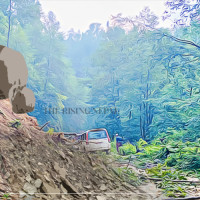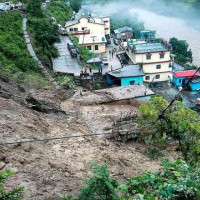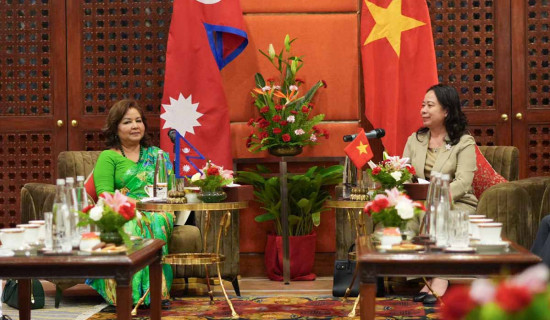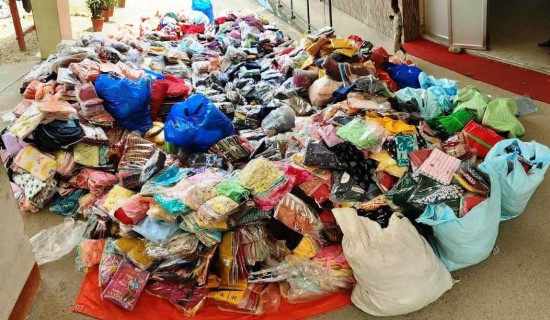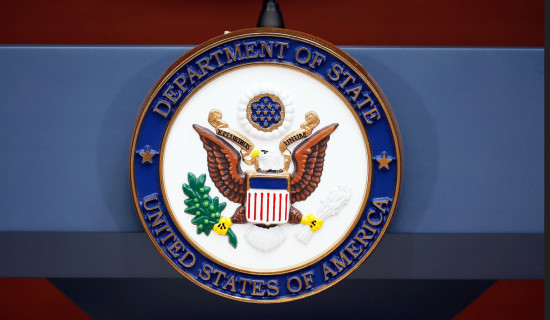- Sunday, 24 August 2025
Vigilance Against Disaster
On July 8, 2025, the Bhotekoshi River flooded in Nepal-China border in Rasuwa district, leading to one of the most harrowing cases of natural disasters in Nepal. Over 19 people were reported missing and 9 died as the Miteri Bridge collapsed in the wake of the inundation. It was a tragedy that is unfortunately becoming commonplace in Nepal every monsoon. And lately, such natural disasters are becoming erratic and unpredictable, making it quite difficult for meteorologists and natural disaster experts to issue a warning beforehand.
Nepal is a nation of towering mountains, majestic hills and sweeping plains that create an interesting topography. It is also landlocked with a large number of rivers that snake across the Himalayas, hills, valleys, and plains. Such geography gives the nation a unique appeal to tourists who enjoy the sights, views and treks along with a pleasant weather. However, there are disadvantages to such topography. As such, Nepal is situated in an active collision zone of the Indian and Eurasian tectonic plates, which has resulted in extreme elevation differences, a monsoon climate and fragile geology, all of which play a hand in the nation’s yearly occurrence of natural disasters.
The heavy rain in the monsoon and lately, an off-season precipitation, lead to aggravation of soil erosion, floods, landslides, and so on. One of the causes of landslides is extreme elevation differences as well as steep slopes in the mountainous and hilly regions. The mountains might be ethereal to view but they are also geographically fragile and prone to landslides and flow of debris. During heavy monsoon, the soil gets saturated by the rain and becomes unstable as it slides down the slope. The high gradient of rivers flowing from the Himalayas adds to intense erosion, which contributes to landslides, and even makes the river banks prone to flooding.
Landslides further enable flooding when they block a river, creating a temporary dam and when this dam bursts, it can result in a sudden and highly destructive flood. Each year, rain thunders down during monsoon season in Nepal from June to September, causing rivers to swell. Particularly, flash floods have become quite common, as seen in Kathmandu last year when the Manohara River inundated and submerged parts of the valley. What was alarming was that it was highly unpredictable. The residents of Kathmandu valley were shocked to see rising water that swept inwards towards the land, causing people to take cover in higher stories of buildings.
It generated consternation among those who resided on the ground floors. The entire nation was taken unawares as the post-monsoon rain swamped the capital city. Additionally, Glacial Lake Outburst Floods (GLOFs) occur when glaciers melt rapidly due to rising temperature (an impact of climate change) and cause the glacial lakes to swell, leading to the breaching of dams. Nepal has several glaciers which, though beautiful and scenic, are also a potential risk to the nation and its residents. It is said that the Rasuwa flooding was a case of GLOF; an example of how glaciers can turn lethal, often without warning.
Overall, the geographical structure of Nepal might provide a striking and unique characteristic, but it also makes the nation vulnerable to natural disasters, particularly during the monsoon season, leaving behind havoc each year.






-original-thumb.jpg)
